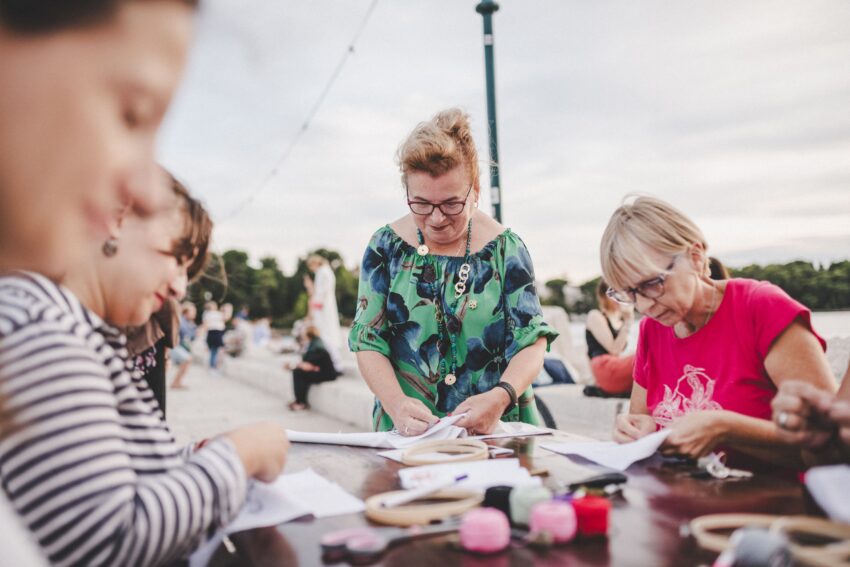Developing Food Heritage-Based Tourism: Challenges and Opportunities
Introduction
The safeguarding of food heritage is important in the context of modern tourism. This pilot case, which focuses on maintaining and promoting traditional Mediterranean food practices, has started with a series of workshops in Rovinj, Croatia. The initiative is centred on creating sustainable food tourism activities that respect local traditions while adapting to contemporary challenges. Below, we outline the key takeaways from the workshops held so far, highlighting both the difficulties and potential ways forward.

© Ajoj
Workshop 1: Engaging the Core Group
The first workshop took place on August 19th 2024, gathering six bearers of traditional practices and a representative from the Rovinj Tourist Board. Held in a traditional tavern, or spacio, this space symbolised the heritage of fishermen who historically socialised there after a day at sea. The meeting focused on the bearers’ perspectives regarding the development of food heritage-based tourism.
One significant takeaway came from a comment by a participant: “The fillet killed the fish!” This metaphor captured the tension between traditional food practices and modern tourism, where the need for efficiency and broad appeal has led to changes in the Mediterranean diet, particularly regarding seafood.
Challenges Identified
- Sanitary Regulations: Strict food safety laws don’t always support traditional practices, particularly when handling and preparing seafood.
- Logistics: As a result of over-tourism supply chains are challenged, especially in historical city centres where traditional markets and supply systems struggle to keep up.
- Identity: Modern trends in food preferences are making it challenging to maintain traditional culinary identities, as some fish species are no longer available or popular.
- Changing Infrastructure: Urban planning changes near heritage sites, such as the space in front of the Ecomuseum. It hampers the organisation of activities in these spaces.
- Political Will: Support from local governments and tourism policymakers is inconsistent, and the competition with fine-dining restaurants puts pressure on traditional food establishments.
- Private Sector Involvement: Encouraging collaboration with local restaurants and entrepreneurs remains a challenge, especially for larger-scale projects.
Opportunities and Strategies
- Focus on Traditional Practices: Maintaining traditional recipes and ingredients is crucial, although some flexibility might be needed to incorporate new species like the invasive blue crab. The challenge is to modernise without losing cultural identity.
- Small-Scale Sustainability: Rather than expanding, the bearers suggest improving the quality of services and focusing on sustainability to ensure long-term viability.
- Promotion and Branding: A lack of promotion has been identified as a barrier. Developing a strong brand or campaign that emphasises local food traditions could increase visibility and attract tourists interested in ‘authentic experiences’.
- Restaurant Collaboration: One practical idea is to partner with local restaurants to offer at least one traditional dish inspired by Batana, a type of traditional boat, on their menus.
- Awareness Campaigns: Raising awareness through brochures, souvenirs, and other promotional materials will help highlight the particular value of local food heritage.

© Ajoj
Workshop 2: Embroidery and Food Memories
On September 11th 2024, the second workshop developed a creative approach, integrating food heritage into a participatory embroidery session. Held during a food heritage event in an open public space, participants were encouraged to share food-related memories while creating embroidery, with fish-themed designs being a focal point.
The discussion on food turned out secondary to the embroidery activity, but the event succeeded in creating a sense of community among all participants. People shared memories about traditional dishes, such as various fish recipes, crab dishes for St. Mark’s Day, and local sweets like fritule and crostole. While the challenge lay in maintaining focus on food discussions, the event surely offered a platform for promoting the project and connecting with the public. The workshop took place in open space and various people came to talk and ask questions about the workshop and the project.

© Ajoj
Looking Ahead
The next and third workshop, scheduled for mid-October 2024, will focus on collaboration with the tourism sector. The goal is to develop concrete action plans based on the ideas from the core group of bearers and the inputs from local tourism professionals. This workshop will aim to refine the proposed initiatives and ensure they align with both heritage safeguarding and tourism promotion.
Conclusion
The project’s early stages highlight the delicate balance between safeguarding food heritage and adapting to the pressures of modern tourism. While challenges such as regulatory hurdles, logistical issues, and the loss of identity persist, there are also clear opportunities. By focusing on small-scale sustainability, improving promotion, and fostering collaboration with local businesses, there is potential to create a tourism model that honours traditional food practices while engaging a contemporary audience.